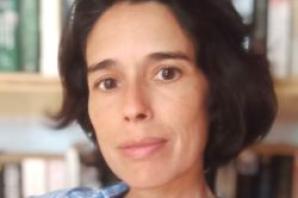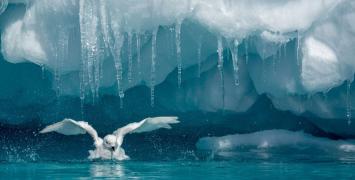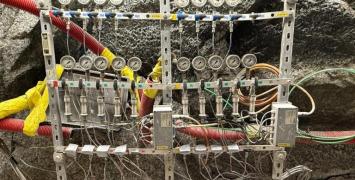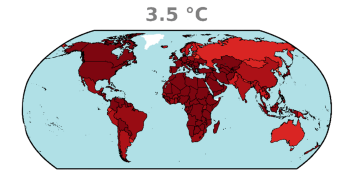Dunes through time
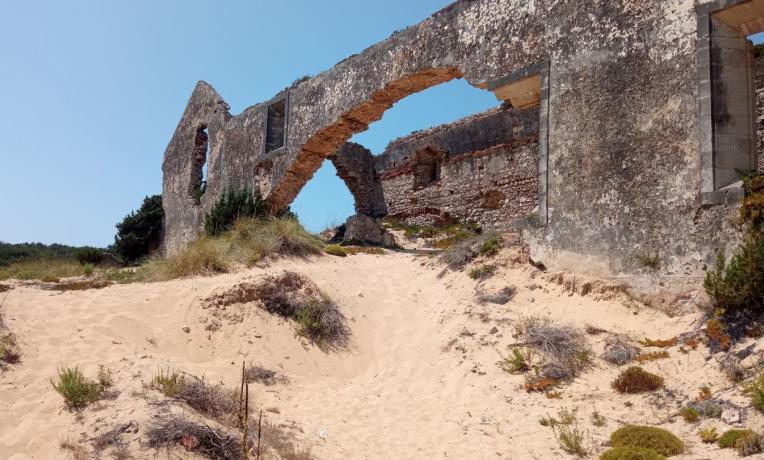
By Rosaria Carbone
‘Nowadays, cities near the ocean face significant risks of sea flooding’, says Joana Gaspar de Freitas. ’However, 20 years ago, while researching in some archives, I was surprised to discover that in the 19th century, people living near the coast were not afraid of the ocean, but of the sand. This discovery intrigued me, and that’s how I decided to investigate coastal dunes - traditionally a topic studied by natural scientists - through the lens of history.’
In her ERC project DUNES, the Portuguese historian aimed to explore how our perception of dunes changed over time. While dunes are now protected ecosystems as they are natural barriers against the sea, in the past, they were considered dangerous. In specific climatic conditions, blown by the wind, dunes without vegetation would drift, covering villages and fields with sand and causing damage to the population.
The 20th century saw extensive dune destruction. Dunes were flattened to build on them, sand was used as a construction material and dunes were stabilised with vegetation. Entire dune areas were converted into forests, profoundly impacting landscape and ecosystems. Today, we recognised their importance and we invest heavily in their restauration. Freitas says: ‘I was interested in understanding why this shift in perception occurred, as we are now restoring what was destroyed in the last 50 years. This connection between history and present is what drives my research.’
Her work initially focused on European countries such as Portugal, France, the Netherlands, Germany, Denmark, and the UK, and then moved to a global scale, including the US, Brazil, Mozambique, and New Zealand.
Dune afforestation
In the late 18th century, French engineers developed a successful strategy to trap dunes by planting trees, covering the dunes of Gascogne with pine trees. Portuguese engineers adopted these techniques to immobilise shifting sands, experimenting with various plant species, including non-native ones like Acacia. However, this later posed a problem as Acacia became invasive. These efforts led to the creation of new landscapes that significantly impacted biodiversity.
The idea of afforesting dunes spread from Europe to the colonies. The Portuguese introduced afforestation practices to Angola and Mozambique. In the latter, to stabilise shifting sands, they used Casuarina, a pine native to Australia, which reshaped the local ecosystem.
‘When studying dunes, I also enquire about the people involved - what was the relationship of indigenous communities in these countries with the dunes? How did this change when settlers arrived? What knowledge was transferred, and what plants were tested? This study isn’t just about dunes; it’s related to the history of the Portuguese and British empires, and the global exchange of ideas and techniques that spanned centuries’, explains Freitas.
Beach nourishment
Dune recovery programs are currently a priority for costal managers because dunes serve as a natural barrier against flooding. But how can dunes be restored when many are now covered by forests or buildings? Different countries take different approaches: in the UK, forests are being cut to restore open sand landscape; in Portugal, these forests have become part of the natural and historical heritage, so they cannot be removed. Restoration methods also include beach nourishment, where sand from dredged harbours is used to replenish depleted beaches.
But recovering dunes isn’t just about sand; it also involves reviving native ecosystems, including plants and animals. ‘At first, my research focused on dunes from a geological perspective,’ Freitas recalls. ‘But I soon realised the importance of plants and biodiversity in dune management. Different plant species were used to stabilise dunes in various countries. As a historian, I found it fascinating to trace the transfer of plant species and the exchange of knowledge through letters, books, and reports.’
Why history matters
Historically, coastal research has been dominated by disciplines such as geology and geography, with little input from historians. That’s starting to change. ‘Understanding the history of a beach or a dune system - not just its recent past - is crucial,’ says Freitas. ‘I would say that most of the people interested in my work are not historians, but scientists.’
One of the key outputs of the DUNES project is a database that includes reports, manuscripts, journals and maps collected by the team from archives worldwide. ‘It’s a resource for scientists and decision-makers to understand long-term trends and inform their actions today,’ she explains.
Her research findings - collected on a recently published book available online - underscore a vital lesson: the decisions made today will shape the future. Addressing climate change requires adaptive solutions based on new sources of knowledge. This study provides essential insights to authorities responsible for coastal management, helping them make informed decisions. ‘Over the years, the way we think about and use dunes has changed. It's important for decision-makers to understand that what they decide to do today will have an impact in the future. We are always convinced that we know the right course of action, but people in the past thought the same. Access to long-term information can help guide better decisions’, Freitas explains.
Building on the transdisciplinary approach of her work, Freitas aspires to establish a formal programme in environmental history in Portugal to highlight the importance of history in shaping solutions for today’s environmental challenges. ‘This ERC grant really opened doors and showed me that it's possible to collaborate with people from different fields - and I just love that. Historians are typically in archives, working alone, but this project allowed me to connect so many areas and people, and I'm thankful for that,’ she says.
Engaging the younger generation
Apart from sharing her findings with coastal managers and decision-makers, Freitas wanted to reach a wider audience. ‘Beaches are central to life in Portugal, but how many people know their history?’ Her team established collaborations with teachers and schools in the area of Lisbon. As the topic is transdisciplinary and international, they combined natural sciences, geography, literature, English and Spanish classes to show students why dunes are vital, tailoring the presentations to different age groups. Students were also taken on field trips, introduced to university life with visits to classes and the library, and supported in preparing an exhibition on dunes.
The team also organised online presentations for Brazilian schools. ‘In Brazil, some students have never seen a beach or a dune because they live far away from the ocean. So, this project had a powerful impact on them,’ Freitas concludes.
Biography
Joana Gaspar de Freitas has a PhD in contemporary history and is a researcher at the University of Lisbon, Portugal; she is also co-editor of the journal Coastal Studies and Society. Her teaching and research interests lie in the environmental history of coastal zones, including risk, vulnerability, and resilience, extreme events, climate change adaptation, traditional ecological knowledge, coastal management and coastal cultural heritage. Taking a transdisciplinary approach to coastal areas issues, Joana has the ability to bridge the humanities and sciences, having published extensively with colleagues in geology, geography, biology, anthropology, literature, and history. She has just published a book based on her ERC research.

